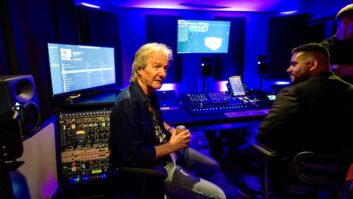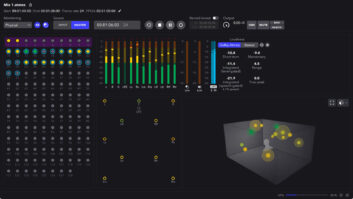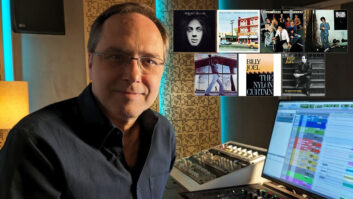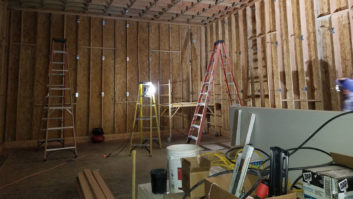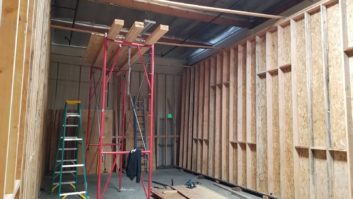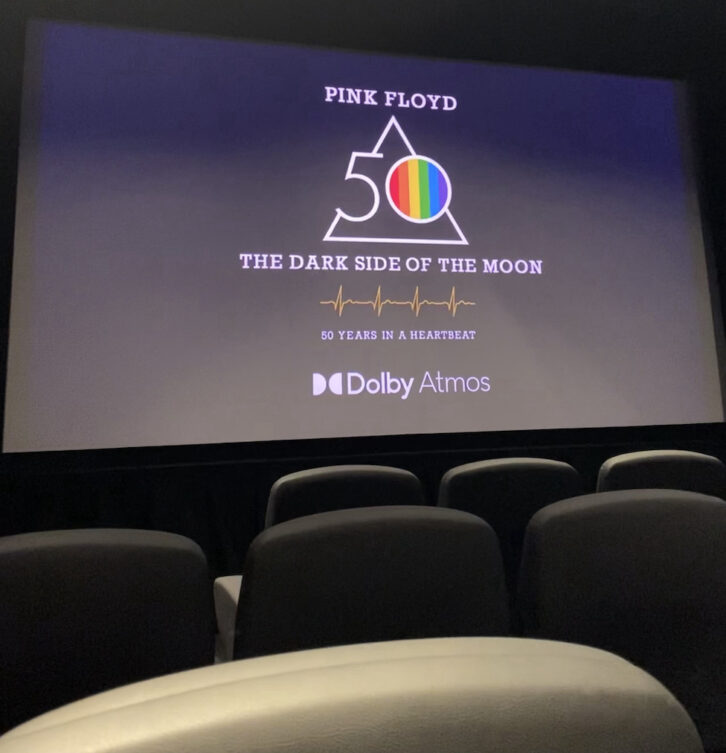
Recently, I’ve been thinking a lot about, of all things, Pink Floyd’s The Dark Side of the Moon, which turns 50 this year. It’s not an immediate go-to album for me, but sure, I have it in my house. It’s sold an estimated 45 million copies over the years, so odds are you have it too, and if not in physical form, then on the streaming service of your choice. Dark Side’s legacy is deep—it spent 724 weeks (14 years) on the Billboard 200 chart, cemented the band’s exalted status in the classic rock pantheon, had arguably the most iconic album cover ever, and inspired a thousand Laser Floyd shows of questionable artistic merit. It’s also a pretty good record.
Even now, the album remains so omnipresent that it’s the focus of a new 50th-anniversary box set containing an endless assortment of mixes on Blu-Ray, DVD, CD and, just for old times’ sake, vinyl. It features everything you want from a box set: great packaging, an unreleased vintage concert recording, and the original album in a bevy of 5.1 Surround and stereo versions (Dark Side engineer Alan Parsons’ original Quad mix should have also been included). However, the collection’s true calling card is its brand-new, never-before-heard Dolby Atmos mix.
While that box set looks mighty sweet (and, at $300, mighty expensive), I already have Dark Side on a gorgeous 1978 vinyl picture disk with utterly execrable sound, and a 5.1 Surround SACD I was given 20 years ago at a 30th-anniversary press event for the album, held at New York City’s Hayden Planetarium in a nod to the original 1973 launch at the London Planetarium. In the decades since that 30th-anniversary event, I’ve never listened to the SACD’s 5.1 mix by James Guthrie—because like most folks, I don’t have an SACD player. The format never really took off, arriving just as the record industry went into freefall due to filesharing, but Dark Side still managed to move 800,000 SACDs in its first year of release—a statistic that says far more about the public’s devotion to the album than the format.
That 30th-anniversary event was unremarkable—I’m not sure if they even had a 5.1 system set up to let us hear the Surround mix—but it came to mind one day in March when I headed uptown to Dolby’s NYC screening rooms for Sony Music’s Dark Side 50th anniversary event: an industry premiere of that much-anticipated Dolby Atmos mix, created once again by James Guthrie. Entering the building required signing a generic NDA that said I couldn’t tell anyone about anything I might see or hear during my visit. The album and the Atmos mix will be out by the time you read this, but even a pointless NDA is still an NDA; I had to get permission to be able to write about listening to music that’s been around for 50 years.
Ushered into the sumptuous Dolby 88 theater, so named for its capacity—and it was at capacity—we all sat in darkness for 42 minutes and simply listened to the album on the best Atmos system in the world. No images on the Dolby Vision screen, no phone use allowed. No distractions.
On The Cover: Las Vegas Takes Immersive Live, Part 1
What did I think of it? Whatever you like or dislike about The Dark Side of the Moon, you’ll experience that even more while listening to the Dolby Atmos mix. I found the languorous, undulating flow of “Us and Them” even more intoxicating, Clare Torry’s wailing vocals on “The Great Gig in the Sky” even more committed, and the interview soundbites even more irritating (I realize I stand alone on that last one). Interestingly, the chiming clocks on “Time” and cash-register sounds of “Money” were far more front-focused than I expected, but that made perfect sense in a mix that resolutely valued clarity and thoughtful placement over blunt showmanship.
In short, it’s a smart mix—and hearing it in the context of a theater was what made this event far more memorable than the one 20 years earlier, because even though there was nothing to see and no performance per se, it was an experience shared with other people.
Listening intently with 87 others in the dark that day highlighted to me how important immersive sound will become for group experiences in the very near future—heck, it’s already happening. Immersive sound formats, including Dolby Atmos, are making serious inroads into the live sound world, and as this month’s cover story illustrates, star-studded Las Vegas residencies are becoming the high-profile standard-bearers for those technologies, attracting tourist audiences who will soon expect that immersive experience during a night out back home. A residency’s use of spatial audio has an impact because it sounds great—and because hearing it is an experience shared with other people.
The irony is that consumers today most often experience immersive sound at home, where it’s mostly used to evoke real-world spaces—for instance, recreating an arena’s reverberance in a concert video watched on a home theater. What will happen as we introduce immersive sound technology into more of the spaces it is often used to emulate? Will it all get too meta for its own good, or will previously unimaginable creative opportunities arise? I don’t know, but we’ll find out—and we can chat about it in 20 years at the Dark Side 70th-anniversary event.
